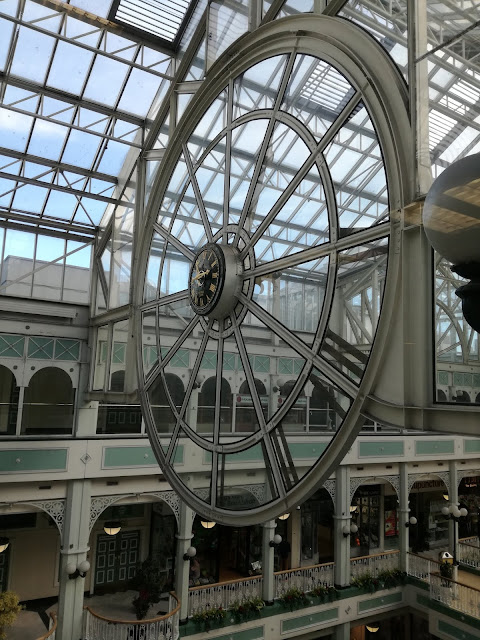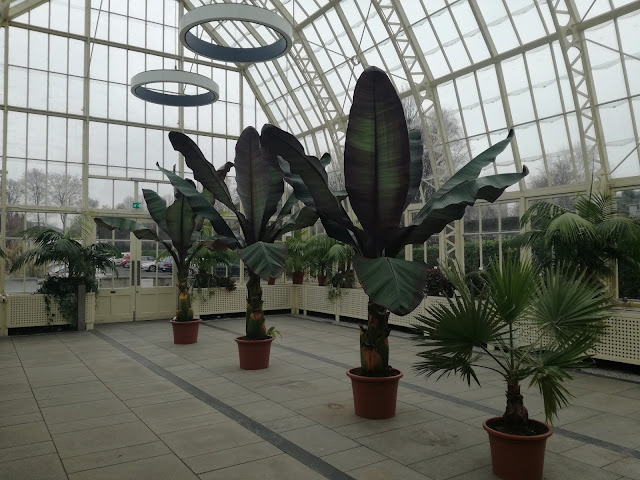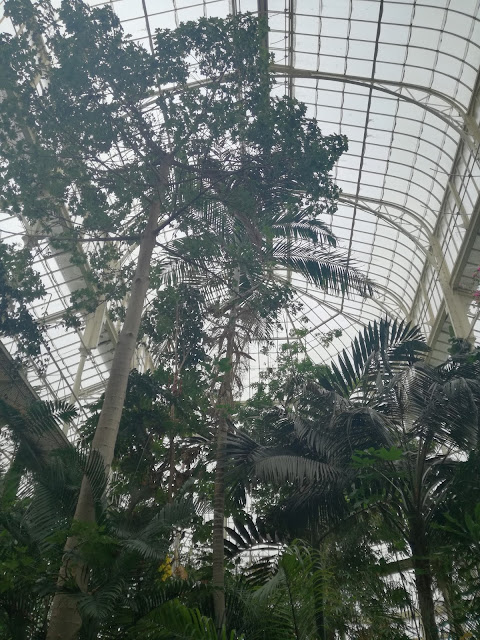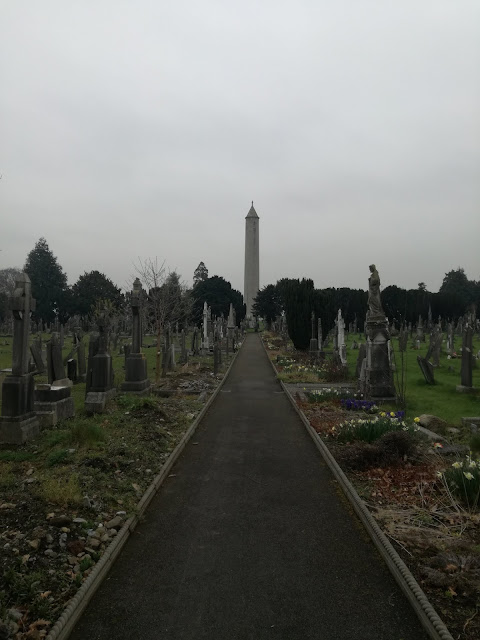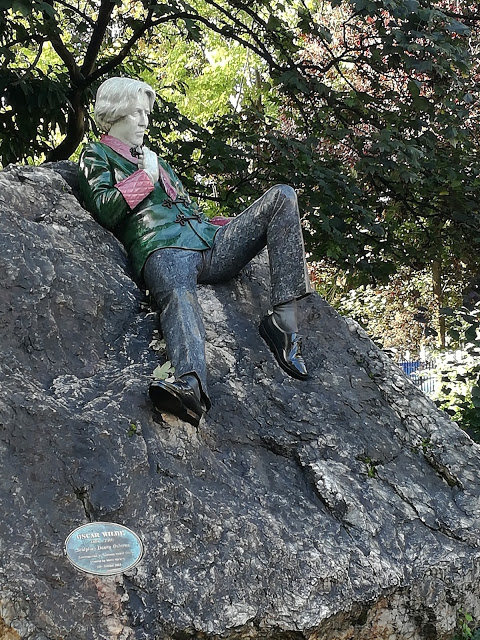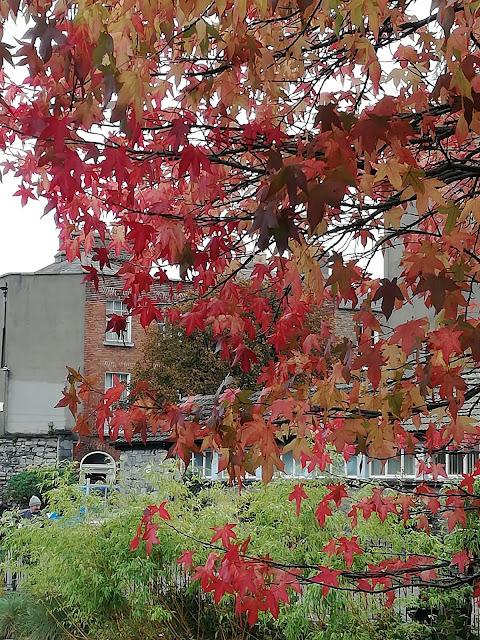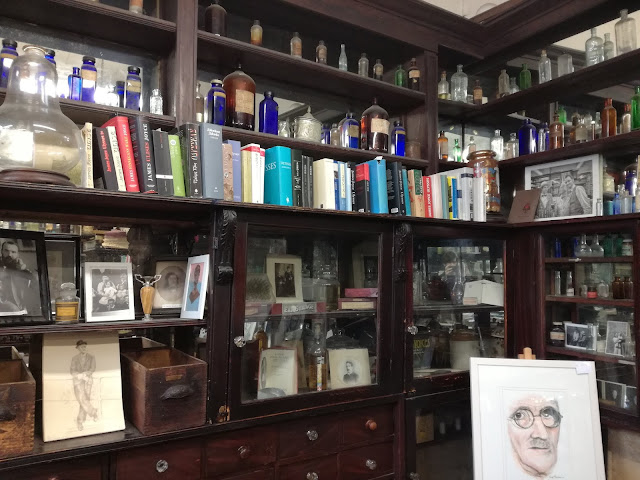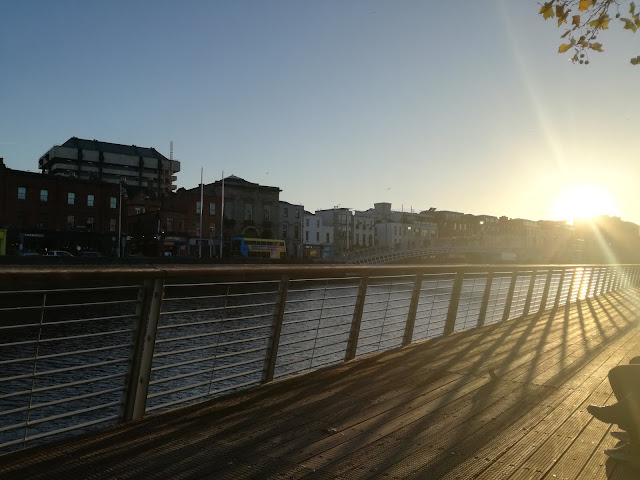A very very very long blog of combined photos from Autumnal and Springtime visits to Dublin... (in no particular order).
34 Things I Did in Dublin....
....to Books Upstairs....
They also have a little cafe upstairs, overlooking the city, which is the perfect place to quietly hide and drink coffee, sketch and disappear into a book for a time...
And a cosy basement section downstairs, complete with a Very Comfy Chair.
...and onto The Gutter Bookshop....
....to Hodges Figgis...
....and The Winding Stair...
...browsing beautiful Folios in the market...
...and finally making purchases....
2. Spotted a stray dinosaur that was keeping watch over unsuspecting Dubliners.....
3. Re-visited the W.B. Yeats exhibition at the National Library...
4. Admired the many and varied decorated electrical boxes which are scattered throughout the city...
5. Paid my first visit to the remarkable Marsh's Library....
Sadly, photographs are not permitted inside, but you can see a selection of photos over at their Pinterest page... and in this article...
6. Admired the changing hand-written seasonal notices outside this city-centre florists.....
7. Returned over and over to the National Gallery for perusals of beautiful artwork...
 |
| The Sunshade, 1913, by William Leech. |
 |
| Stained glass panels by Harry Clarke. |
 |
I also liked the little carved beasties on the gallery doors....
8. And saw the Frederick William Burton: For the Love of Art exhibition.
Which was completely stunning...
But no photographs were allowed. So I got a picture of the promotional artwork on the stairs, the poster, and a souvenir postcard instead.
Seeing the real, original version of this beauty was something very special indeed.
Which was completely stunning...
9. Another of the trip highlights was having the opportunity to see an early Van Gogh at the National Gallery.
Rooftops in Paris (1886) was painted before Vincent broke into his famous vibrant use of colour and technique - but it's still incredibly beautiful and evocative.
Bill Hayes writes -
"...It can be yours. No different from falling in love with a song, one may fall in love with a work of art and claim it as one's own. Ownership does not come free. One must spend time with it, visit it at different times of the day or evening; and bring to it one's full attention.
...This is not just true for New Yorkers but anyone anywhere with art to be visited - art being a relative term, in my definition. Your Monet may, in fact, be an unpolished gemstone or mineral element. Natural history museums are filled with beauties fairly begging to be adopted. Stay alert. Next time a tattered Egyptian mummy speaks to you across the ages, don't walk away. Stay awhile. Spend some time with it. Give it a proper name: Yours."
- and I've definitely fallen into a love affair with this painting - and have returned to see it each time I've come to the city. I don't really know why I love this painting, but I do. It has become Mine.
The Whovian connection makes me smile. But also being able to stand about a foot from the canvas, and admire the swirl and flow of brushstrokes and colour was enormously moving.
And seeing the modest, smudgy 'Vincent' scrawled at the bottom in red paint made it all the more affecting and real.
And (although I cannot really say why), Child in a Yard (1953) by Louis le Brocquy at the Hugh Lane Gallery is a painting I return to again and again, and have a huge fondness for.
The accompanying description in the Gallery notes that, "...unlike the adult figures who appear so despondent in the family pictures, his children as in 'Child in a Yard' have a more hopeful air, unblemished as yet by experience. The walking figure of the child is painted in an almost pure pigment which contrasts unnervingly with the dark of the grim surroundings to create a mysterious sense of good and evil, darkness and light, innocence and experience."

This beautiful oasis of calm in the midst of the bustling city has become one of my most-loved spots in Dublin.
I also made a friend. We shared tofu and vegan coleslaw together.

The park is especially beautiful first thing in the morning - aside from a handful of commuters, it's empty and full of stillness and delicate sunlight.
10. Spent a great deal of time wandering quietly or sitting reading in St Stephen's Green Park.


The park is especially beautiful first thing in the morning - aside from a handful of commuters, it's empty and full of stillness and delicate sunlight.
And there are Autumnal treasures to be found.
11. Explored the Museum of Natural History (also known as 'The Dead Zoo'...)
It's a strange, musty, curious place... and very much of another era...

Some of the exhibits are somewhat unsettling...
... while others - although remarkably lifelike - are simply desperately sad and poignant.
But! It is home to the most brilliant collection of glass replicas of Irish sea (and land-bound) slugs. Which really is utterly ace.
And glass models of marine life.

12. Raided the treasure trove of healthiness that is The Hopsack.
Every shelf and space of this lovely little shop is crammed full of super-healthy and organic / vegan / allergy-friendly food, and is an absolute godsend for someone like me (vegan, very restricted diet, self-catering).
13. Admired the gorgeous Autumnal red-gold of ivy-covered buildings near St Stephen's Green.....
14. Discovered all sorts of surprising and curious treasures in the National Museum of Ireland: Archaeology...
Including....
The Shrine of St. Lachtin's Arm.... cauldrons......

A hoard of nine hand-crafted gold balls (or giant beads) and amber necklaces......
...early Bronze Age lunulae - gold collars made of thinly beaten sheet gold. The crescent shape was thought to represent the solar boat that carries the sun on its journey from day to night through the underworld...
...and many other intriguing items and beauties...
Including....
The Shrine of St. Lachtin's Arm.... cauldrons......

A hoard of nine hand-crafted gold balls (or giant beads) and amber necklaces......
...early Bronze Age lunulae - gold collars made of thinly beaten sheet gold. The crescent shape was thought to represent the solar boat that carries the sun on its journey from day to night through the underworld...
...and many other intriguing items and beauties...
The Museum itself is grand and majestic - with stately marbled staircases, huge, ornate carved wooden doors and a sweeping balcony...
Even the entrance to the toilets is impressive.

It's home to a small Ancient Egyptian section...
Baronstown West Man dates from the Early Iron Age, and was discovered in Co. Kildare.....


This is how scientists believe he would have looked, when he was alive:
15. Nodded to the almost impossibly tall Spire of Dublin - or Monument of Light - which stands on O'Connell Street, and is 120m high....
16. Walked slowly along Grafton Street listening to The Last Song I'll Ever Sing, in tribute to Thom McGinty - aka The Diceman.
When you step out into death
with a deep breath,
the last you’ll ever take
in this shape,
remember the first step on the street–
the footfall and the shadow
of its fall–into silence. Breathe
slow-
ly out before the foot finds solid earth again,
before the city rain
has washed all trace
of your step away.
Remember a time in the woods, a path
you walked so gently
no twig snapped
no bird startled.
Between breath and no breath
your hands cupped your own death,
a gift, a bowl of grace
you brought home to us–
become a still pool
in the anarchic flow, the street’s
unceasing carnival
of haunted and redeemed.
The smell hits as you walk in - dust and age and yellowed pages and silence and ideas and whispered words waiting. Cold white busts of thinkers and writers line the rows of the stacks - stalwart guardians, comfortingly solid in their stillness and unbreaking gazes.
The more colourfully bound books reside on the upper balconies, and seem younger, somehow, the brightness a contrast to the matured deep browns and greys of their older cousins below. Perhaps they will too migrate in time.
What must they whisper between their shelves at night? What rustles and murmurs between browned and fragile pages....?
...And out into Trinity Campus, which is pretty damn handsome too...
The more colourfully bound books reside on the upper balconies, and seem younger, somehow, the brightness a contrast to the matured deep browns and greys of their older cousins below. Perhaps they will too migrate in time.
What must they whisper between their shelves at night? What rustles and murmurs between browned and fragile pages....?
...And out into Trinity Campus, which is pretty damn handsome too...
18. Accidentally discovered this giant squirrel mural on Tara Street, by the riverside...
It was created by Portuguese environmental artist Artur Bordalo - who constructs 3D murals from city waste.
19. Explored the Caution! Fragile - Irish Glass Tradition in Transition exhibition at The National Museum of Ireland: Museum of Decorative Arts and History....
The exhibition featured works from Róisín de Buitléar, Fred Curtis, Eamonn Hartley, and Greg Sullivan - masters of glass cutting and engraving from Waterford. The work comments on the history and social experience of working in the Waterford Crystal factory and living in Ireland.
It featured many delicate and beautiful pieces.....
and.....
A full-sized, beautifully created, handmade glass sword.
It felt as if it had tumbled straight off the pages of a Neil Gaiman novel.
...and their amazing exhibition on the 1916 Easter Rising in Dublin...
We know their dream; enough
To know they dreamed and are dead;
And what if excess of love
Bewildered them till they died?
I write it out in a verse—
MacDonagh and MacBride
And Connolly and Pearse
Now and in time to be,
Wherever green is worn,
Are changed, changed utterly:
A terrible beauty is born.
~ W.B. Yeats
 |
| The General Post Office (GPO) in 1916. |
 |
| The Irish Republic flag which flew over the GPO. |
 |
| Ammunition was carried in this secret book compartment, a week before the Easter Rising. |
 |
| Francis Skeffington and Hanna Sheehy - pacifists, socialists, feminists and nationalists - and leading figures in Ireland's Suffragist movement. |
 |
| A 'Votes for Women' badge worn by Francis Skeffington Sheehy at the time of his death, and returned to Hanna afterwards. |
 |
| Remembering those who died during the 1916 Easter Week. |
 |
| A set of playing cards, found in the cell of Thomas Macdonagh after his execution. |
 | |||||||||||
| A vest worn by James Connolly during the 1916 Rising. It was returned to his family after his execution. | 20. Greeted the GPO (General Post Office) on O'Connell Street. |
My fascination with the 1916 Easter Rising in Dublin (and, by extension, the GPO) was what drew me to Dublin in the first place - and I always begin and end my visits here.
21. Admired the rather impressive architecture (and clock) in St Stephen's Green Shopping Centre...

The autumn leaves twirled calmly and delicately from branches and across the waters and all was still.
23. Sheltered hurriedly from a sudden Spring downpour in a bandstand in St Stephen's Green Park....
24. Made the first of what I hope will be many visits to Dublin's National Botanic Gardens.
I am most grateful to Gavin Friday for this - as I was unaware of the Garden's existence, until I heard him mention it in an interview.
"...I and my friends in Lypton Village did not want to play football... we did not want to be in the Civil Service... we did not want to be hanging round the shops drinking cider...
...we felt rejected - and we wanted to be rejected by that society at the time.
And we would come to places like this...
And we would come to places like this...
It was like a refuge, a haven, y'know?...
...I always wanted something more beautiful.
And maybe this was some sort of subliminal seed that was set..."
I can see what he meant.
The day I visited, the Gardens were virtually deserted, and I was free to wander round its grounds and greenhouses in silence, lost in my own thoughts and marvelling at the quiet, proud, gentle beauty of the place.
There's not only a sprawling park, but also great glass greenhouses with steamed windows and quietly decaying grandeur - crammed full of towering palms, gorgeous orchids, potted ferns with exotic Latin names - and with warmth, stillness and silence.






You cold, James?
Oh, a little.
Why don't we go inside?
It's colder in there.
I guess you're right.
Actually, I saw the greenhouse. I thought I'd come outside and take a look at it. It looks like heaven.
Like heaven?
I saw a movie once. Part of it took place in heaven. Everyone wore white. Lived in crystal houses like that.
~ Professor Tripp and James Lear, Wonder Boys
If you stand very very still you can hear the plants slowly breathe and very very slowly stretch to the sun.
I could happily come and just live here amongst the greenery and the quiet.
... and then on into the adjoining solemn serenity of Glasnevin Cemetary...
25. Joined a giant Repeal the 8th pro-abortion-rights rally.
It drew thousands of protesters and supporters, and filled the length of O'Connell Street. It was colourful, passionate, joyous, angry and deeply powerful.
And I loved that someone had crocheted a little pink uterus to bring along.
26. Explored St Patrick's Cathedral for the first time...
It houses a monument to Richard Whately, Archbishop of Dublin......
....who, it turns out, was something of an interesting character...
27. Drifted in and out of the the calm and elegant Merrion Square Park...
And paid my respects to dear Oscar...
28. Sat in the bright brilliant glow of the early-Autumn sunshine in the Garden of Remembrance, under the outstretched wings of the Children of Lir...
29. And then onto the Hugh Lane Gallery - one of my favourite places in Dublin - specially as it is home to a stunning collection of Harry Clarke stained glass...
...and this powerful sculpture by Irish artist John Kindness - Monkey and Dog. The two animals are said to represent the opposing Unionists and Nationalists, forever locked together in battle, and both equally powerful.
...and explored their fantastic Frances Bacon exhibition, which includes a fascinating mock-up of Bacon's studio...
30. Visited the ever-tranquil Blessington Street Basin...
31. ...And the extraordinary treasure-trove that is Sweny's Pharmacy...
I inadvertently arrived at the right time to take part in a reading of Joyce's Ulysses.
...and into the early evening.
P.J. Murphy (a lovely gent, and regular Sweny's volunteer) a young American tourist and myself sat in the shop for about a half hour, and took it in turns to read aloud passages from the novel to each other:
'BLOOM: I was just going back for that lotion, whitewax, orangeflower water. Shop closes early on Thursday. But first thing in the morning. (He pats divers pockets)....
(He points to the south, then to the east. A cake of new clean lemon soap arises, diffusing light and perfume.)
THE SOAP:
We're a capital couple are Bloom and I;
He brightens the earth, I polish the sky.
(The freckled face of Sweny, the druggist, appears in the disc of the soapsun.)
SWENY: Three and a penny, please.
BLOOM: Yes. For my wife, Mrs Marion. Special recipe.'
And I bought some lemon Sweny's soap to take home.
32. Walked along the banks of the Liffey at sunset...
33. And so home.
Goodbye, little room.
"...This has been ours, however brief the time. Though two nights only have been spent beneath a roof, yet we leave something of ourselves behind. Nothing material, not a hair-pin on a dressing-table, not an empty bottle of Aspirin tablets, not a handkerchief beneath a pillow, but something indefinable, a moment of our lives, a thought, a mood."
~Daphne du Maurier
Rebecca.
34. But not before saying a most fond farewell to the city.
"... Since arriving in this town, I was becoming more and more honest, open and grounded. At first, I'd come through like a tourist, but now, I could feel every one of my footsteps leaving a mark on the ground here, and sense how they added up over time.
Each day I walked this town, every step my feet inscribed, I was also building my inner landscape. They'd keep growing, in tandem, and a hint of my presence would linger even after I was gone.
... I could sense the daily movements and patterns of people I hadn't even known about a few years ago coming in and out of this town like breath. I wasn't alone. There were other people, people I didn't know, coming in and out of this town, too, the same way, and all of that was how a town was made.
It was just as the pianist Fujiko Hemming had said. On first glance it looked chaotic, and muddy, and ugly, but when your eyes were open, you saw that all the movements and elements wove themselves into a wonderful pattern. What a joyful sight it was.
It was like a twining plant, made of a mixture of desire and worry and misery and love and splendid smiles and abundance and everything else in our collective unconscious. Even if the vine was severed with a hatchet, or burned to the ground, nothing would take away the landscapes inside people's hearts or the times that lived on inside them.
...That was what the town had shown me. ...
Thank you.... You wrapped me gently and let me rest and showed me what was true. No matter how you change, may you remain here forever, tenaciously sending up new shoots.
I layered my voice with the many that had no doubt already expressed this simple wish."
~ Banana Yoshimoto,
Moshi Moshi

























































































































































